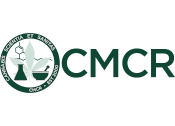| Type: Published Manuscript |
| Title: A cost-effectiveness model for adjunctive smoked cannabis in the treatment of chronic neuropathic pain |
| Authors: Tyree GA, Sarkar R Bellows BK, Ellis RJ, Atkinson JH, Marcotte TD, Wallace MS, Grant I, Shi Y, Murphy JD, Grelotti DJ |
| Year: 2019 |
| Publication: Cannabis and Cannabinoid Research |
| Volume: 4 Issue: 1 Pages: 62-72 |
| Abstract:
Background: A recent meta-analysis affirmed the benefit of medicinal cannabis for chronic neuropathic pain, a disabling and difficult-to-treat condition. As medicinal cannabis use is becoming increasingly prevalent among Americans, an exploration of its economic feasibility is warranted. We present this cost-effectiveness analysis of adjunctive cannabis pharmacotherapy for chronic peripheral neuropathy. Materials and Methods: A published Markov model comparing conventional therapies for painful diabetic neuropathy was modified to include arms for augmenting first-line, second-line (if first-line failed), or third-line (if first- and second-line failed) therapies with smoked cannabis. Microsimulation of 1,000,000 patients compared the cost (2017 U.S. dollars) and effectiveness (quality-adjusted life years [QALYs]) of usual care with and without adjunctive cannabis using a composite of third-party and out-of-pocket costs. Model efficacy inputs for cannabis were adapted from clinical trial data. Adverse event rates were derived from a prospective study of cannabis for chronic noncancer pain and applied to probability inputs for conventional therapies. Cannabis cost was derived from retail market pricing. Parameter uncertainty was addressed with one-way and probabilistic sensitivity analysis. Results: Adding cannabis to first-line therapy was incrementally less effective and costlier than adding cannabis to second-line and third-line therapies. Third-line adjunctive cannabis was subject to extended dominance, that is, the second-line strategy was more effective with a more favorable incremental cost-effectiveness ratio of $48,594 per QALY gained, and therefore, third-line adjunctive cannabis was not as cost-effective. At a modest willingness-to-pay threshold of $100,000/QALY gained, second-line adjunctive cannabis was the strategy most likely to be cost-effective. Conclusion: As recently proposed willingness-to-pay thresholds for the United States health marketplace range from $110,000 to $300,000 per QALY, cannabis appears cost-effective when augmenting second-line treatment for painful neuropathy. Further research is warranted to explore the long-term benefit of smoked cannabis and standardization of its dosing for chronic neuropathic pain. |
